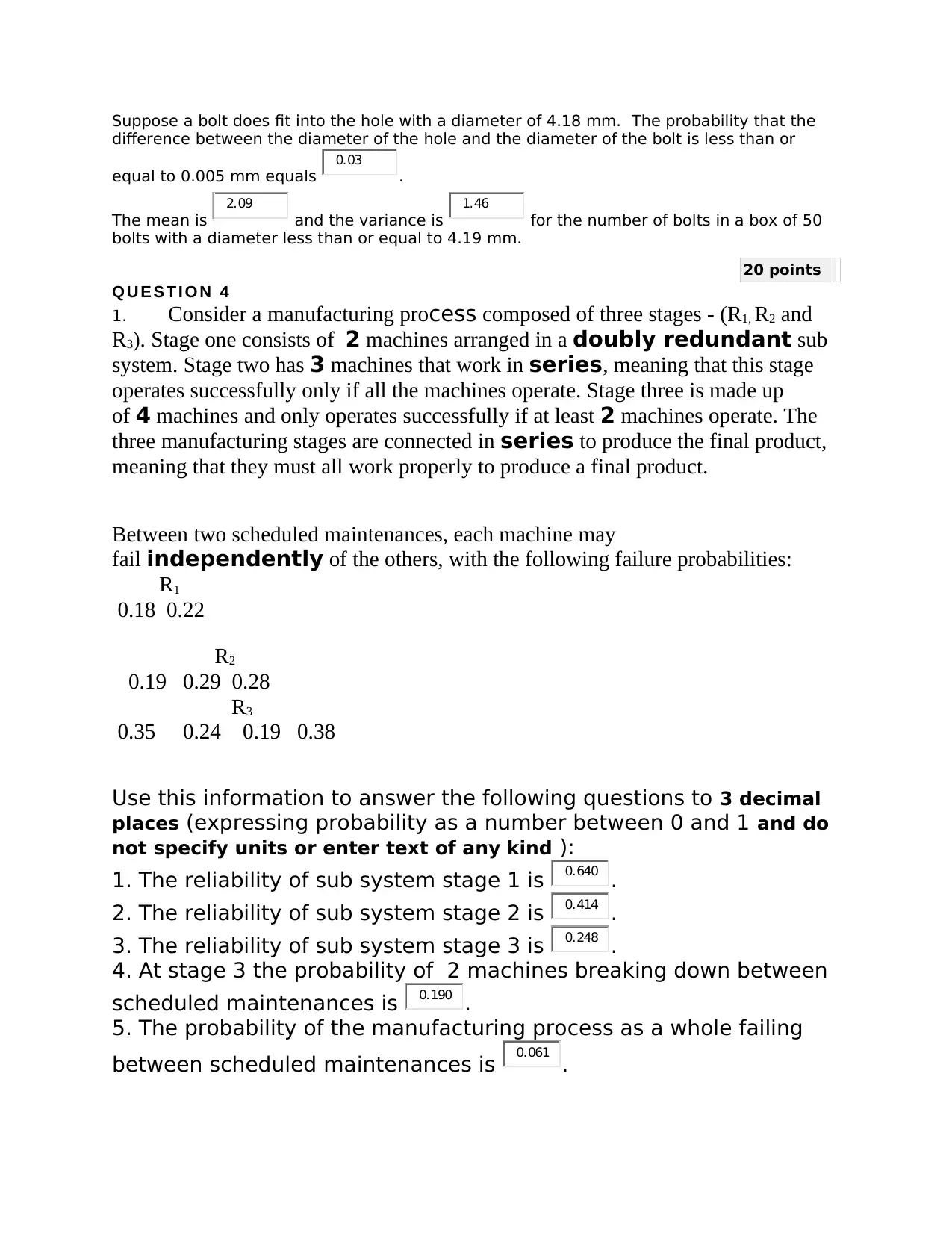Probability & Statistics: Solved Assignment Problems
VerifiedAdded on 2023/05/30
|2
|782
|294
Homework Assignment
AI Summary
This assignment consists of several probability and statistics problems. The first question involves calculating the probability of the intersection of two non-independent events. The second question deals with a multiple-choice exam scenario, focusing on expected marks, variance, probability of specific scores, and the impact of negative marking. The third question explores a uniform distribution related to metal bolt diameters, calculating probabilities and parameters. The final question involves a manufacturing process with multiple stages and machines, assessing system reliability and failure probabilities. Each problem requires precise calculations and understanding of statistical concepts, with final answers rounded to specified decimal places. Desklib provides solved assignments and past papers for students.
1 out of 2






![[object Object]](/_next/static/media/star-bottom.7253800d.svg)